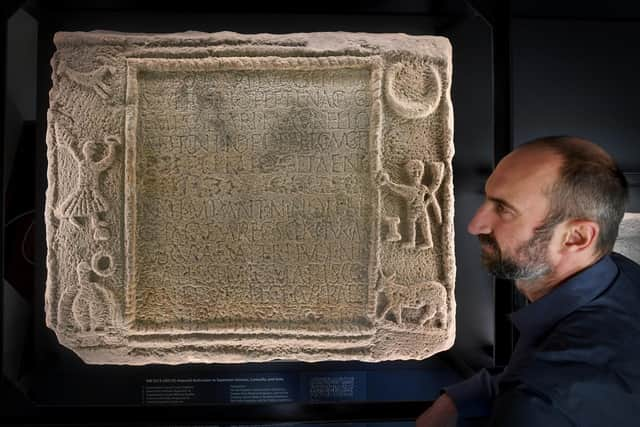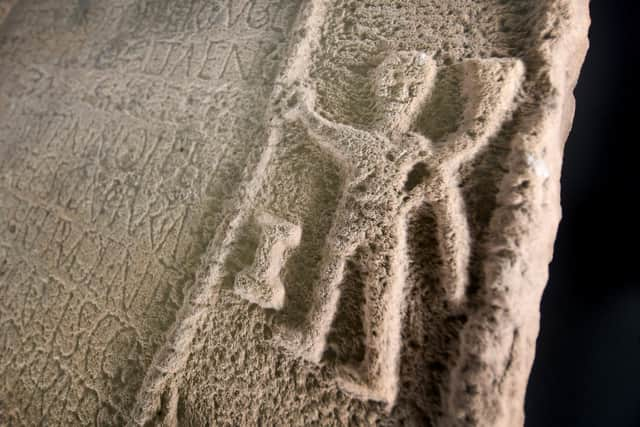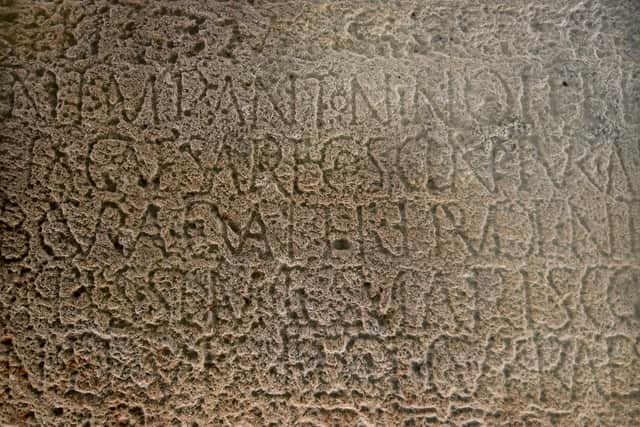One of longest Roman inscriptions ever dug up in UK goes on display for first time in 1,700 years
In the 3rd century AD the Romans rebuilt their fort at Brough Hill in Bainbridge with a new barracks for Belgian soldiers.
We know this because of a fascinating inscription, dug up by archeologists in 1960, but so heavy that it’s been stashed away in a basement at the University of Leeds ever since.
Advertisement
Hide AdAdvertisement
Hide AdThis evening (October 18) the inscription – one of the longest ever found in ancient Britain – is going on public display in the University’s Michael Sadler building for the first time in 1,700 years – after being shifted to a new position by crane.


The miraculously well preserved 600lb stone is surrounded by symbols – a half-goat, half-fish, a crescent moon, a conquering figure standing on a globe. The names it carries includes those of the Libyan-born Emperor Septimus Severus, the first African emperor of Rome, and his two sons. Severus died in York in AD211.
A smaller piece of sandstone from Bainbridge is also going on display.
Dr Samuel Gartland, a lecturer in Leeds’ School of Languages, Cultures and Societies said: “The larger stone really is a superstar inscription, one of the longest and largest ever to be found in ancient Britain and unlikely to ever be surpassed as a record of the world of Roman Yorkshire.
Advertisement
Hide AdAdvertisement
Hide Ad“Appropriately enough for our launch during Black History month, the stones tell of a period where Yorkshire came under the rule of the first African emperors of Rome, as well as the dynastic jostling and assassinations in the imperial family.”


The reconstruction of the fort was “the pushing back against the insurgency of local Britons. It is like saying: ‘We’re here, we are rebuilding the fort, we are strengthening our grip on Wensleydale’”.
The stones were initially built into the wall of a barracks building but they had subsequently been reused as foundations for a Roman road and spent much of the past two millennia upside down in a muddy field.
The archaeologists who discovered them knew they were special, but moving the objects was a weighty problem and the Royal Engineers army regiment at York were eventually called in.
Advertisement
Hide AdAdvertisement
Hide AdDr Gartland said he’d felt the stones were so significant they had to go on display, and they “seem to grab people’s attention because they are so rooted in the landscape in Yorkshire”.


He added: “This world they are mapping onto stone is so different from what we imagine – African rulers, Belgian soldiers, rooted in the heart of Wensleydale.”
An expert from Glasgow University intends scanning the stone with specialist laser equipment to try to capture its original colours.
The stones will be unveiled at 5.30pm, followed by a talk celebrating their discovery.
